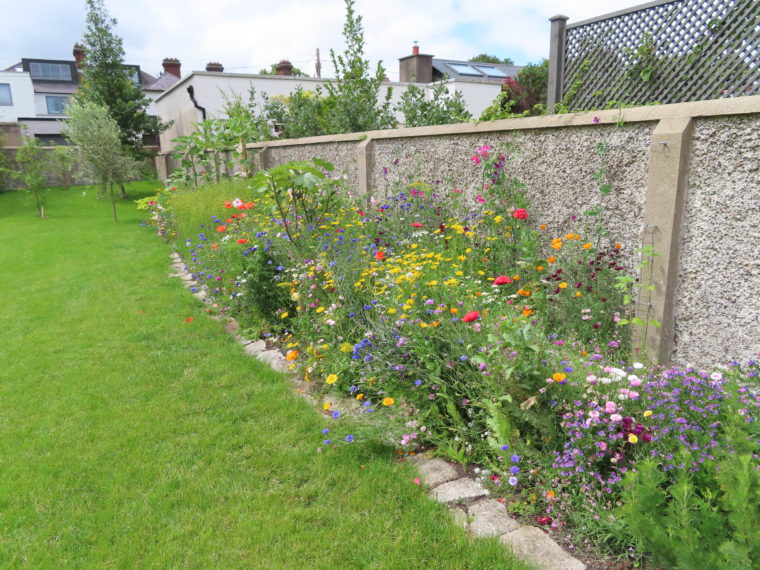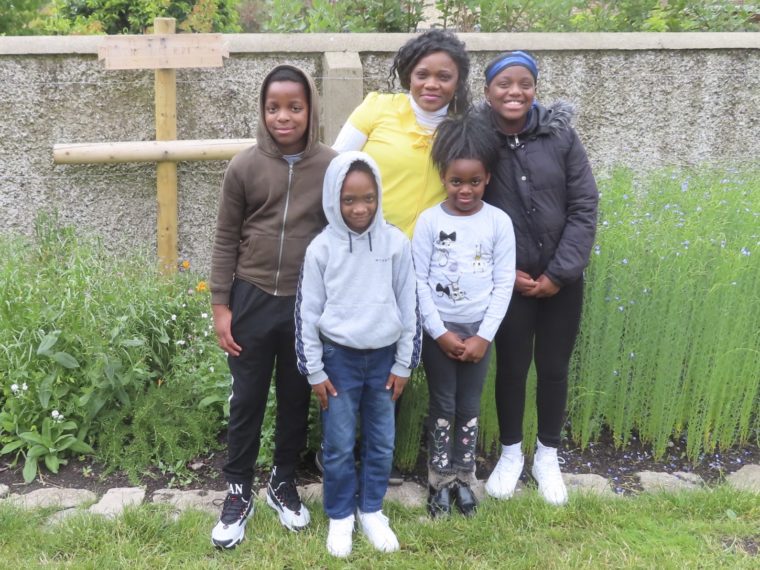
The late Rev John Stott was also an ornithologist. He wrote a book “the birds our teachers”. Plants are also great teachers and many different plants are referenced in the Bible. Having moved into a new Manse in 11 Arranmore Road, Donnybrook last July, I discovered that the soil in this part Dublin is light and perfect for most Biblical plants. Due to south facing walls and proximity to the sea we seldom get hard frosts. I decided to have a go at planting a Biblical Garden.
Biblical herbs
- Mustard grows exceptionally quickly emerging in just four days. Jesus used the mustard seed to teach that even a little faith in a great God can make a big difference. Mustard leaves really spice up a sandwich and Jesus also used mustard to illustrate the Kingdom of God. When we work to create a better environment we are doing the work of King Jesus and enhancing life for everyone.
- Fresh sage is a wonderful herb for flavouring stuffing or sausages. It is thought that sage was the prototype for the menorah lampstand that lit up the holy place in the tabernacle/temple.
- Parsley is another lovely herb and it is dipped in salt water during the Passover meal recalling the tears of the Hebrew slaves in Egypt.
- Hyssop is also associated with the Passover and was used to paint blood of lambs on the doorposts and lintels of Hebrew homes to avoid the plague of the death of the firstborn. This also has deep significance for Christians who recall Christ, our Passover, who is the lamb of God who takes away the sin of the world.
- Wormwood is useful in a different way. Dried wormwood is far better than mothballs in protecting clothes as it doesn’t leave a smell. In scripture along with gall its bitterness signifies judgement on evil. Priests still use it in exorcisms.
- The manna was white like coriander seeds.
- Jesus commended the Pharisees for tithing mint and dill but criticised them for neglecting more important matters like love and justice and mercy. This is perhaps the most challenging lesson of all.
Biblical trees
- Figs are easily grown and the fruit is sweet. It would be a very bad year indeed if the fig tree did not bud (the fruit emerges along with the leaves). However such was the commitment of the prophet Habakkuk that he was determined to worship even on a year when the harvest did not come.
- Olive trees also grow well in Dublin and have been symbolic of hope and peace since the dove returned to the Ark with an olive leaf in its beak.
- With faith as a grain of mustard seed, Jesus said, we could say to a mulberry tree to be uprooted and planted in the sea. We get the saying “caught red handed” from its messy fruit.
- Myrtle has a pure white flower and ever since Queen Victoria the royal family includes a sprig in their wedding bouquets. It symbolises fertility and Isaiah said that the day was coming when myrtle would grow instead of briars.
- Bay is a useful culinary tree in any garden but as we know it was also used to decorate victorious athletes. Paul said that they run to get a crown that will not last, but we run to get a crown that will last forever.
- Almond is the first tree to bloom in the Holy Land. I saw it in bloom in Bethlehem in January with snow on the ground. Jeremiah was once asked “What do you see?” When he answered that he saw the branch of an almond tree God said “You have seen correctly, for I am watching”. The Hebrew words for almond and for watching a very similar. God was reminding the people that their carelessness and injustice would not go unpunished. My almond tree has bourn fruit in its first year in the garden.
- On a more positive note, apples signify love in the Song of Solomon.
- Acacia produces a strong light wood that was used in making the Ark of the Covenant.
- Elijah sheltered under a broom that symbolises renewal in the Bible.
- Grumpy Jonah sheltered beneath a gourd.
- Vines produce wine that gladdens the heart, and Jesus, the True Vine, brings joy to weddings and hope to funerals.
Biblical vegetables
- Meat was rarely eaten in Biblical times and lentils were a staple. Daniel thrived on vegetables and Esau exchanged his birth right for a bowl of red lentil stew. The children of Israel were so fed up with manna that they considered going back to Egypt for the onions, cucumbers and garlic that formed part of their diet there.
Biblical flowers
- The plant that has brought me most joy has been flax. Eugene McConville and his brother Felix grow flax in Dromore, Co. Down for the Linen Museum in Lisburn. He gave me a matchbox of seed and said that if I planted them around St Patrick’s Day, and I should have flowers in eleven weeks. St Patrick’s Day was a Tuesday, and the first flower emerged eleven weeks to the day. I write this at the end of July it is still flowering even though each flower only lasts for one day. Rahab the prostitute hid the Hebrews spies under sheaves of flax in Jericho and the fine linen garments worn by the priests were made from flax.
- A close second in terms of enjoyment has been the bee garden. It is a blaze of colour and busy with bees of all kinds. Jesus said “Why do you worry…. see how the lilies of the field grow. They do not labour or spin. Yet I tell you, not even Solomon in all his splendour was dressed like one of these”.
These are just some of the Biblical plants that are thriving in Donnybrook. Visitors are very welcome and admission is free. Maureen Rowan who wrote an article for the previous issue kindly printed a full colour brochure and this is available for a €10 donation to Methodist World Development & Relief for the support of a water project in Dabane, Zimbabwe. To arrange a visit to 11 Arranmore Road, Dublin D04 F8N0 phone or text Rev Andrew Kingston on 0831520171. The visit can be conducted safely outdoors as there is a door at the side of the Manse. Parking in front of the Manse driveway is free.

